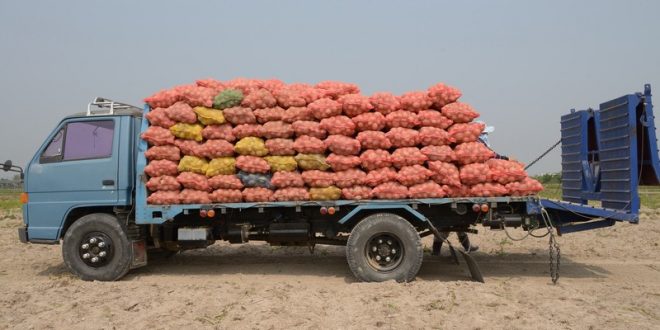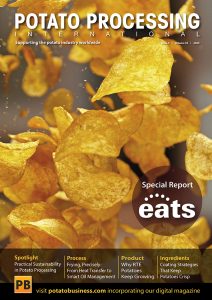USDA Releases Report on Truck Shortage Affecting Potato Shipping

Trucks for shipping potatoes and other vegetable and fruits are hard to come by and very expensive in the United States, according to a report released by USDA.
The inability to find timely transportation has cost fresh shippers in the Red RiverValley millions of dollars, not only in lost sales but dropping prices and higher shrink as the supply of potatoes backs up in storage.
Over the last several years, the combination of overall economic growth and ongoing driver shortages has contributed to diminishing capacity in the trucking industry. This situation peaked at the end of 2017 and beginning of 2018, as additional factors contributed to record high truck rates and widespread shortages across the trucking industry. Spot rates for some refrigerated trucks reached 40-year highs, as reported by USDA’s Specialty Crops Market News division.
This 31 page report provides background and context to shed light on the various factors contributing to these record high rates and the driver shortage.
Reported U.S. truck shipments of fresh produce during the fourth quarter of 2017 were 7.72 million tons, 7% lower than the previous quarter, and 4% lower than the same quarter last year. Shipments from Mexico were the highest in the fourth quarter, totaling 2.32 million tons and accounting for 30% of the total reported shipments of fresh fruits and vegetables.
Shipments from the Pacific Northwest totaled 1.87 million tons, representing 24 % of the reported shipments. Movements from California totaled 1.43 million tons, representing 19% of the reported total. The following top five commodities accounted for 42% of the reported truck movements during the fourth quarter of 2017: potatoes (15%), apples (12%), onion, dry (7%), tomatoes (4%), lettuce, iceberg (4%).
The reported shipments by selected commodities shows that in the 4th quarter of 2017, 1,170,000 tons were shipped, meaning -3% compared to previous quarter (1,205,000 tons in the previous quarter) and -4% compared to same quarter of the last year (1,221,000 in the same quarter of the last year).

















